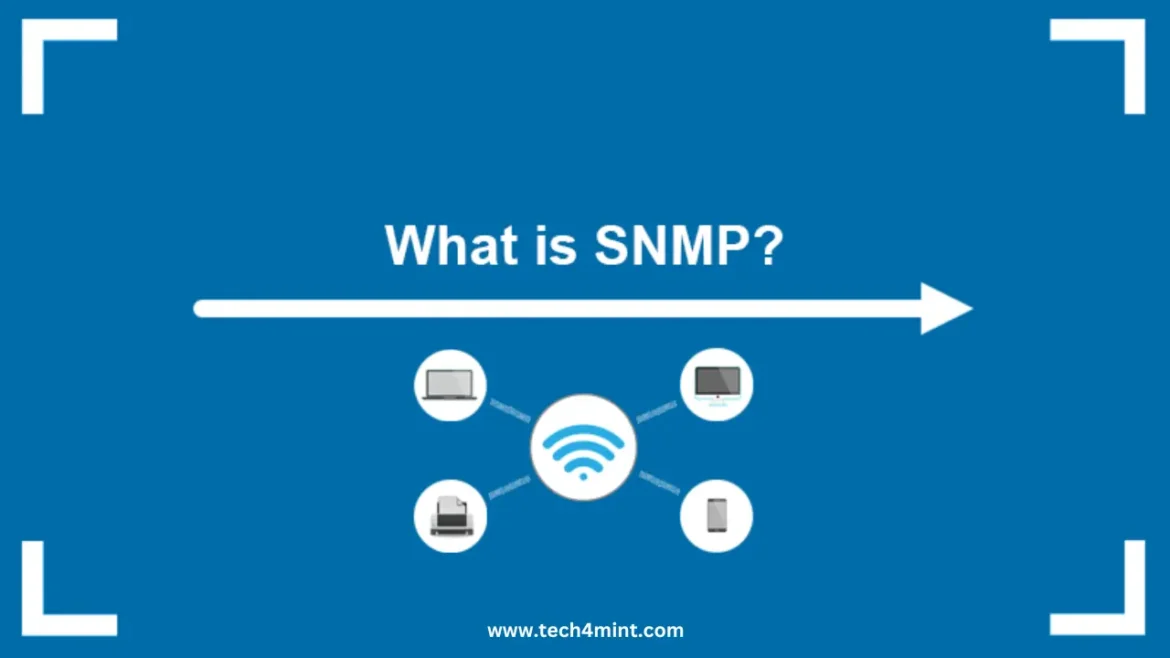What is SNMP - What is SNMP Trap - What is SNMP inform - SNMPv2 Vs SNMPv3
What is SNMP What is SNMP Traps What is SNMP inform SNMPv2 Vs SNMPv3
Table of Contents
ToggleSimple Network Management Protocol, or SNMP, is a widely used protocol in network management systems to monitor and manage network devices. SNMP enables administrators to collect information from various network devices, such as routers, switches, and servers, and even modify their behavior remotely. This article provides an in-depth look at SNMP, covering its protocol details, format, versions, SNMP traps, and SNMP informs.
SNMP Protocol Details:
SNMP operates on the client-server model, where network devices act as servers, and a central manager acts as the client. The protocol uses a set of standards to communicate between the manager and the agents (devices being monitored). SNMP employs a combination of UDP (User Datagram Protocol) and OSI’s CMIP (Common Management Information Protocol) for its communication.
The key components of SNMP include:
-
Manager: The central system responsible for monitoring and managing network devices.
-
Agent: Software residing on network devices that collects and stores information, and communicates with the manager.
-
Managed Devices: The network devices being monitored and managed.
SNMP Format:
SNMP messages are typically encoded in ASN.1 (Abstract Syntax Notation One) and transmitted using BER (Basic Encoding Rules). The SNMP message format consists of a header and a PDU (Protocol Data Unit). The header includes the SNMP version number and community string, providing a level of security for the communication.
The PDU contains various types, including:
-
GetRequest PDU: Requests information from the agent.
-
GetNextRequest PDU: Retrieves the next set of information from the agent.
-
SetRequest PDU: Modifies values on the agent.
-
Response PDU: Sent by the agent in response to GetRequest, GetNextRequest, and SetRequest.
SNMP Versions:
SNMP has undergone several revisions, with SNMPv3 being the latest and most widely adopted version. The versions include:
-
SNMPv1: The first version, featuring basic functionality with limited security. It uses community strings for authentication, which are sent in plaintext.
-
SNMPv2c: An improved version with additional features, such as bulk retrieval. However, it still lacks robust security mechanisms.
-
SNMPv3: The most secure version, introducing features like user-based authentication, encryption, and access control. SNMPv3 addresses the security concerns present in earlier versions.
SNMP Traps:
SNMP traps are asynchronous notifications sent by agents to the manager to indicate specific events. Traps allow devices to notify the manager of critical conditions without the manager actively polling for information. Common traps include link up/down, system reboot, and authentication failures.
SNMP Informs:
SNMP informs are similar to traps but provide a more reliable method of communication. Unlike traps, informs expect an acknowledgment from the manager, ensuring the receipt of the notification. This acknowledgment mechanism enhances the reliability of the communication between agents and managers, making informs suitable for critical events.
In conclusion, SNMP plays a crucial role in network management, offering a standardized way to monitor and control network devices. Understanding its protocol details, message format, versions, traps, and informs is essential for effective network administration and troubleshooting. As networks continue to evolve, SNMP remains a foundational tool for managing the complexity of modern IT infrastructures.
SNMPv2 vs. SNMPv3
SNMPv2
-
Security Features: SNMPv2 introduced the Community-Based Security Model (SNMPv2c), which added support for bulk operations but did not address the security flaws present in SNMPv1.
-
Authentication: It relies on community strings for authentication, which are sent in clear text, making it vulnerable to interception.
-
Encryption: SNMPv2 lacks native encryption capabilities, making it less secure compared to SNMPv3.
SNMPv3
-
Security Enhancements: SNMPv3 significantly improves security by introducing the User-Based Security Model (USM). It provides authentication, encryption, and access control, enhancing the overall security posture of SNMP.
-
Authentication: SNMPv3 supports various authentication mechanisms, including MD5 and SHA, making it more robust against unauthorized access.
-
Encryption: SNMPv3 supports privacy protocols like DES and AES, ensuring that sensitive data remains confidential during transmission.
